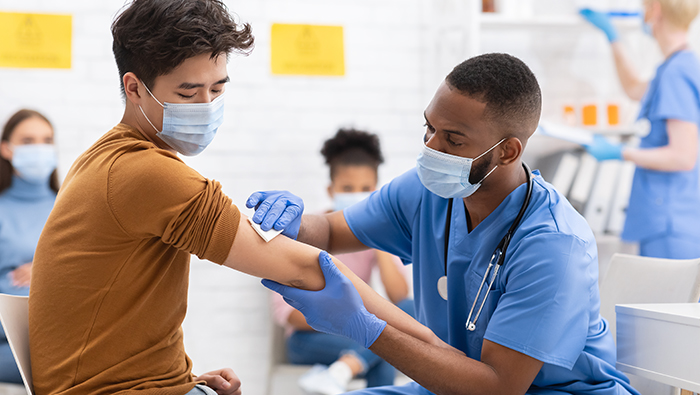Responding to individuals receiving COVID-19 vaccines, the Centers for Disease Control and Prevention (CDC) released fully vaccinated public health guidelines. Specifically, the April 27th guidelines address updated principles that fully vaccinated individuals should follow when out in a public location. The latest CDC release follows March guidance focused on what fully vaccinated individuals should do when indoors with other people.
CDC Definition of Fully Vaccinated
According to the CDC, an individual becomes “fully vaccinated” when the following has occurred:
- Two weeks have passed after their second dose in a 2-dose series, like the Pfizer or Moderna vaccines; or
- It has been two weeks since they received a single-dose vaccine, like Johnson & Johnson’s Janssen vaccine.
If less than two weeks have passed since an individual’s last shot, they do not qualify as thoroughly protected. Accordingly, if a person received the first shot but not yet the second dose, they are not fully protected. Any individual who falls into those examples should follow all prevention steps until fully vaccinated.
Overview of Guidance
According to the public health recommendations, fully vaccinated people can:
- Visit with other fully vaccinated people indoors without wearing masks or physical distancing.
- Meet indoors with unvaccinated people (including children) from a single household at low risk for severe COVID-19. These meetings can occur indoors without wearing masks or physical distancing.
- Participate in outdoor activities and recreation without a mask, except in specific crowded settings and venues.
- Resume domestic travel and refrain from testing before or after the trip or self-quarantine after travel.
- Refrain from testing before leaving the United States for international travel (unless required by the destination). Travelers can also refrain from self-quarantine after arriving back in the United States.
The fully vaccinated public health guidelines also state that affected individuals do not need to:
- Test following a known exposure, if asymptomatic, with some exceptions for specific settings.
- Quarantine following a known exposure, if asymptomatic.
- Participate in routine screening testing if asymptomatic and feasible.
For now, however, the CDC states that fully vaccinated people should continue to:
- Take precautions in indoor public settings like wearing a well-fitted mask.
- Wear well-fitted masks when visiting indoors with unvaccinated people at increased risk for severe COVID-19 disease. Additionally, people should wear masks around those who have an unvaccinated household member at increased risk for COVID-19.
- Use well-fitted masks when visiting indoors with unvaccinated people from multiple households.
- Avoid indoor large-sized in-person gatherings.
- Get tested if experiencing COVID-19 symptoms.
- Follow guidance issued by individual employers.
- Abide by CDC and health department travel requirements and recommendations
In conclusion, the CDC will update and expand the new set of fully vaccinated public health recommendations based on:
- The level of community spread of COVID-19;
- The proportion of the population that is fully vaccinated; and
- The rapidly evolving science on COVID-19 vaccines.

